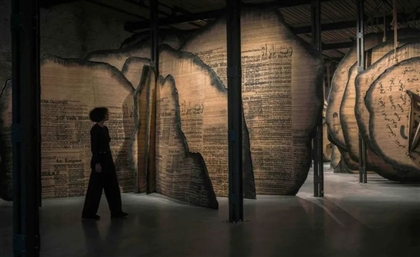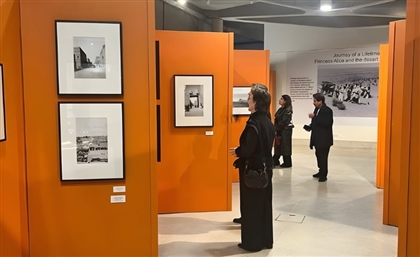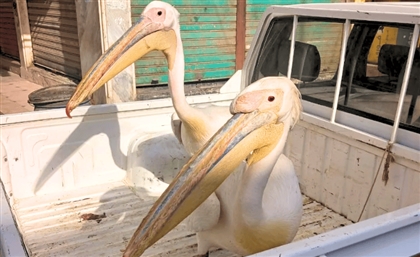Institut Français Showcases Life of Feminist Icon Doria Shafik
From her Sorbonne doctorate to Bint al-Nil magazine and major political protests, the exhibition showcases Doria Shafik’s enduring impact on women’s rights and Egyptian society.
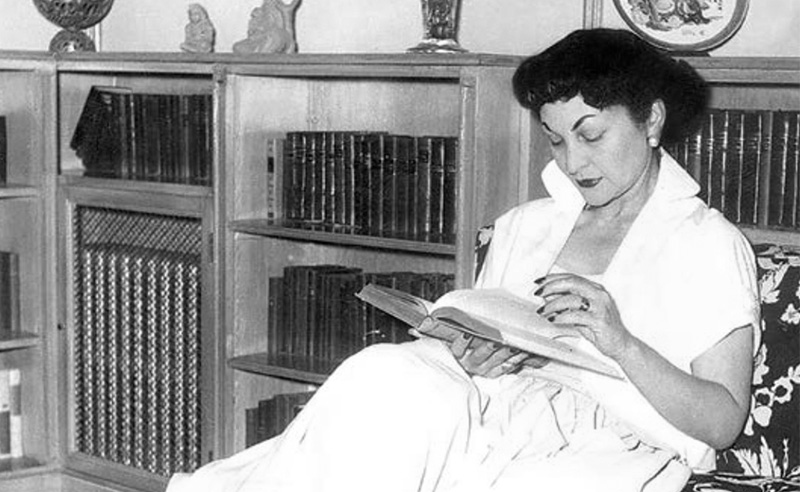
At the Institut Français d’Égypte in Mounira, an exhibition marks 50 years since the death of Doria Shafik, one of the central figures of Egypt’s feminist movement. The exhibit assembles photographs, manuscripts, and personal belongings that traced the full span of Shafik's life.
Born in 1908, Shafik became a leading voice for women’s political rights in Egypt. She founded the Daughters of the Nile Union, launched Bint al-Nil magazine, led the 1951 march of women into Parliament, and staged hunger strikes in the 1950s that challenged both colonial authority and state repression, particularly under Nasser. Her activism resulted in years of enforced isolation, during which she continued writing until her death in 1975.
The collection, curated by art historian Nadine Nour el Din, followed her trajectory from her birth in Tanta in 1908 through her education, activism, and years of enforced isolation. Her daughters, Jehan and Aziza Ragai, attended the opening and reflected on their mother’s legacy throughout the event.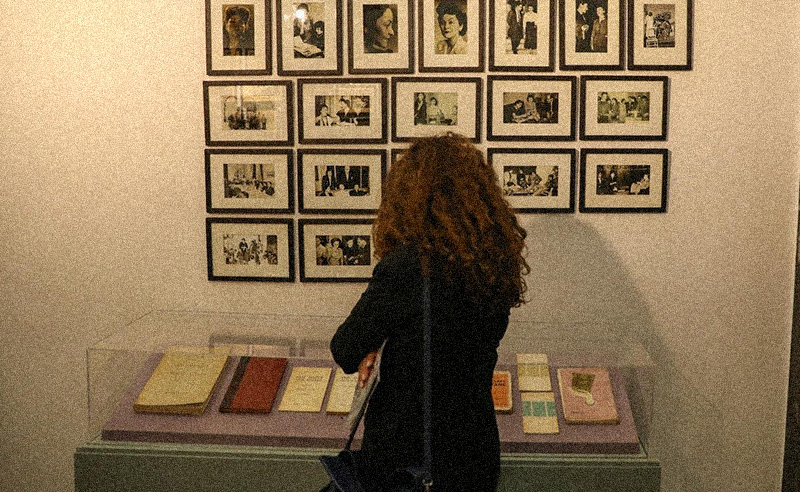 “The impression grew gradually,” Jehan Ragai told CairoScene. “There were caricatures, traditions, photos and articles we had never seen. The research behind it is truly remarkable.”
Early documents outlined her pursuit of education after being denied access to secondary school. Letters and records showed the support she received from Huda Shaarawi, the scholarship that took her to France, and the doctorate she completed at the Sorbonne. Two of her early publications were displayed together: 'L’Art pour L’Art' (1940) and 'Avec Dante aux Enfers', issued by Pierre Fanlac with a preface by Pierre Seghers.
Her return to Egypt in the 1930s appeared through press clippings and photographs, including her participation as the first Muslim woman in the Miss Egypt contest. A June 1932 op-ed for Al-Ahram on the importance of education, particularly for the agricultural sector, was positioned near these early items.
A dedicated section focused on Bint al-Nil, the magazine produced through the Daughters of the Nile Union, which she founded after being excluded from existing feminist groups. Covers, articles, and program materials illustrated her efforts to expand literacy programs, social support networks, and political rights. One page, a satirical quiz titled 'Are you a perfect wife?', asked questions such as “Do you get his clothes for him yourself, or do you let him look for them?” and “Do you show him that you are satisfied and happy with your life with him?”— a clear critique of household expectations placed on women. “She spoke to women beyond the elite, supporting women across society and grounding everything in social justice,” Aziza recalled.
“Bint al-Nil” might well have been Shafik’s sobriquet, given her deep affection for the river. Her daughters said the Nile remained inseparable from her private world. “The Nile was her river-god," Jehan Ragai added. "She always said that walking beside it made her forget her worries.”
The exhibition then turned to her major political actions. Archival documents revisited the 1951 march to Egypt’s all-male parliament, her 1952 anti-colonial protest inside Barclays Bank, and the hunger strikes that followed. Government files traced the repercussions: surveillance, public attacks, professional isolation, and eventual house arrest. Jehan noted how her mother “always opposed colonialism and centred her work on justice, helping women defend their rights, even in matters such as polygamy.”
A separate space presented her personal belongings: a satin dress with a chiffon lining, her pearl necklace, pieces of jewelry, her writing desk, her radio, and bottles of perfume. Letters, including a French manuscript titled 'Tourments', were displayed in full. The text conveyed her confinement in direct, forceful language:
I envy the prisoners
who know their fate —
ten, twenty years… or life imprisonment…
I envy those condemned to death,
those who are judged, those who know
why, how their hands are bound, paying
for such or such misdeed.
But INJUSTICE, the terrible INJUSTICE!,
to be nailed here
for having claimed my FREEDOM!!!
The final rooms traced her last years, when she lived in near-total seclusion until her death in 1975. Photographs, notes, and late writings showed a figure who remained intellectually active despite the isolation. The exhibition also pointed toward the present through her daughters’ reflections. “It’s striking to see what has been gained 50 years later, with women in Parliament helping shape laws. It’s a meaningful legacy,” Jehan said.
“Still,” Aziza remarked, “we have a long way to go.”
“The impression grew gradually,” Jehan Ragai told CairoScene. “There were caricatures, traditions, photos and articles we had never seen. The research behind it is truly remarkable.”
Early documents outlined her pursuit of education after being denied access to secondary school. Letters and records showed the support she received from Huda Shaarawi, the scholarship that took her to France, and the doctorate she completed at the Sorbonne. Two of her early publications were displayed together: 'L’Art pour L’Art' (1940) and 'Avec Dante aux Enfers', issued by Pierre Fanlac with a preface by Pierre Seghers.
Her return to Egypt in the 1930s appeared through press clippings and photographs, including her participation as the first Muslim woman in the Miss Egypt contest. A June 1932 op-ed for Al-Ahram on the importance of education, particularly for the agricultural sector, was positioned near these early items.
A dedicated section focused on Bint al-Nil, the magazine produced through the Daughters of the Nile Union, which she founded after being excluded from existing feminist groups. Covers, articles, and program materials illustrated her efforts to expand literacy programs, social support networks, and political rights. One page, a satirical quiz titled 'Are you a perfect wife?', asked questions such as “Do you get his clothes for him yourself, or do you let him look for them?” and “Do you show him that you are satisfied and happy with your life with him?”— a clear critique of household expectations placed on women. “She spoke to women beyond the elite, supporting women across society and grounding everything in social justice,” Aziza recalled.
“Bint al-Nil” might well have been Shafik’s sobriquet, given her deep affection for the river. Her daughters said the Nile remained inseparable from her private world. “The Nile was her river-god," Jehan Ragai added. "She always said that walking beside it made her forget her worries.”
The exhibition then turned to her major political actions. Archival documents revisited the 1951 march to Egypt’s all-male parliament, her 1952 anti-colonial protest inside Barclays Bank, and the hunger strikes that followed. Government files traced the repercussions: surveillance, public attacks, professional isolation, and eventual house arrest. Jehan noted how her mother “always opposed colonialism and centred her work on justice, helping women defend their rights, even in matters such as polygamy.”
A separate space presented her personal belongings: a satin dress with a chiffon lining, her pearl necklace, pieces of jewelry, her writing desk, her radio, and bottles of perfume. Letters, including a French manuscript titled 'Tourments', were displayed in full. The text conveyed her confinement in direct, forceful language:
I envy the prisoners
who know their fate —
ten, twenty years… or life imprisonment…
I envy those condemned to death,
those who are judged, those who know
why, how their hands are bound, paying
for such or such misdeed.
But INJUSTICE, the terrible INJUSTICE!,
to be nailed here
for having claimed my FREEDOM!!!
The final rooms traced her last years, when she lived in near-total seclusion until her death in 1975. Photographs, notes, and late writings showed a figure who remained intellectually active despite the isolation. The exhibition also pointed toward the present through her daughters’ reflections. “It’s striking to see what has been gained 50 years later, with women in Parliament helping shape laws. It’s a meaningful legacy,” Jehan said.
“Still,” Aziza remarked, “we have a long way to go.”
- Previous Article Egypt’s New Unified Public Transport Card Explained
- Next Article Heirloom Turns Loofah Into Egypt’s Most Unlikely Honey








